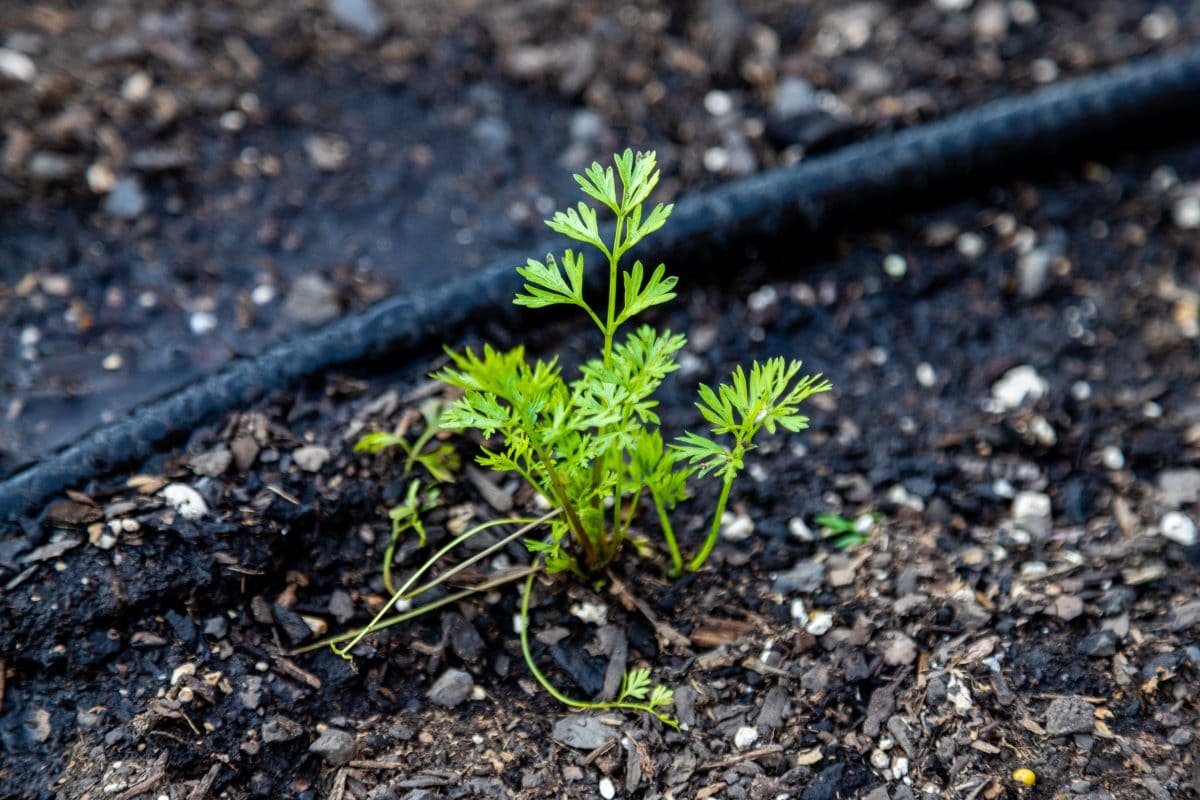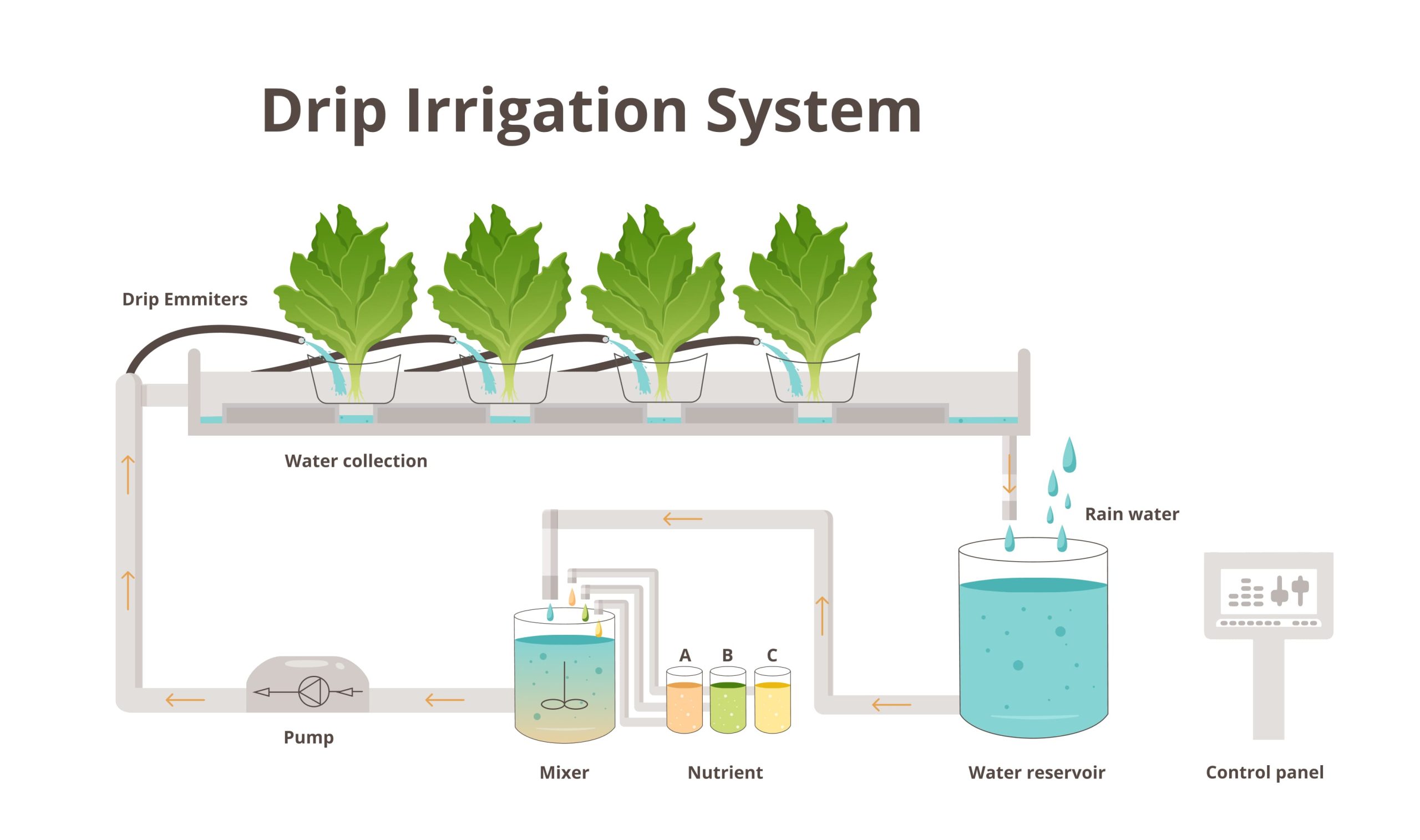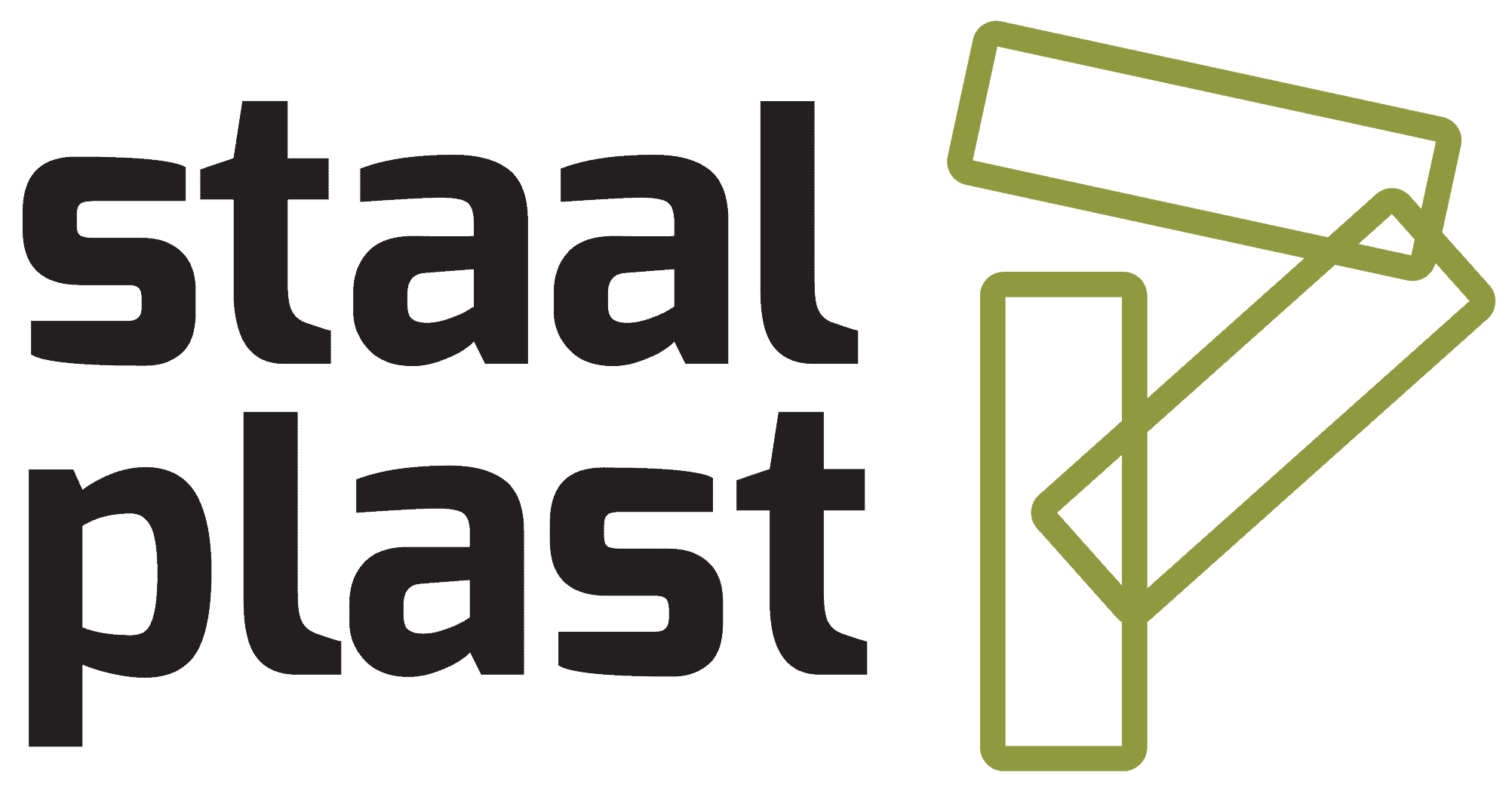Drip Irrigation Systems – how does it work?

Drip irrigation systems are a popular choice among gardeners and farmers alike, offering numerous benefits over traditional watering techniques. From conserving water and reducing weed growth to promoting healthier plant growth and increased crop yields, drip irrigation is a game-changer in modern agriculture.
Join us as we uncover the inner workings of drip irrigation systems, understand their components, learn how to set up and customize them for various plant types, and explore tips to maximize their efficiency. Whether you’re a seasoned gardener or just starting your green journey, this guide will equip you with the knowledge and tools to optimize your watering practices and achieve bountiful and thriving gardens.
What is a drip irrigation system?
A drip irrigation system is a method of watering plants by delivering water directly to the roots through a network of tubes, pipes, and emitters. In this system, water is released in small, controlled drips or drops at or near the base of each plant, providing a slow and steady supply of water and nutrients to the root zone.
The drip irrigation system is designed to minimize water wastage and promote efficient water usage by reducing evaporation and runoff. It can be tailored to suit different types of plants and terrains, making it suitable for a wide range of agricultural, horticultural, and landscaping applications.
Drip irrigation offers several advantages, including water conservation, reduced weed growth, improved plant health, and higher crop yields. Its precise and targeted water delivery helps optimize plant growth while minimizing water usage, making it an environmentally friendly and sustainable watering solution.
How does a drip irrigation system work?
A drip irrigation system works by delivering water directly to the roots of plants in a controlled and precise manner. Here’s how it operates:

- Water source: The system is connected to a water source, which could be a water faucet, a water tank, or a larger water distribution network, where the drip water is mixed with nutritients.
- Mainline tubing: The water flows through a mainline tubing that distributes it from the water source to the various sections of the garden or field.
- Sub-main or distribution tubing: The mainline tubing is connected to sub-main or distribution tubing, which runs along the rows of plants or crop beds.
- Drippers or emitters: Drippers or emitters are attached to the distribution tubing at specific intervals, near the base of each plant. These emitters release water in controlled drips or drops, delivering it directly to the root zone of the plants.
- Filter and pressure regulator: A filter is often incorporated into the system to prevent clogging of the emitters by debris and sediment. Additionally, a pressure regulator may be used to maintain a consistent water pressure throughout the system.
- Gravity or pressure: The water is distributed through the system either by gravity, in the case of a lower pressure system, or with the assistance of a water pump for higher pressure systems.
- Microtubing (optional): In some cases, microtubing may be used to extend the water delivery to individual plants, allowing for more precise placement of the water source.
- Timers and automation (optional): Some drip irrigation systems may include timers or automated controllers. These devices allow you to set specific watering schedules, ensuring that the plants receive the right amount of water at the right times.
In this process, any excess water can be collected in trays from Staal & Plast and reused later, enhancing the overall efficiency and sustainability of the system.
Benefits of using drip irrigation
Using drip irrigation offers a wide range of benefits for agricultural, horticultural, and landscaping applications:
- Water conservation: Drip irrigation is highly efficient in water usage as it delivers water directly to the plant roots. This precision watering minimizes water wastage through evaporation and runoff, conserving this valuable resource. According to some sources the drip irrigation systems use 30-60% less water than an overhead system.
- Reduced weed growth: By delivering water only to the plant roots, drip irrigation prevents water from reaching the areas between plants where weeds typically grow. This helps in reducing weed competition and the need for herbicides.
- Improved plant health: Drip irrigation provides a consistent and controlled water supply, promoting healthier plant growth. With water delivered directly to the root zone, plants can access moisture and nutrients efficiently, reducing stress and the risk of water-related diseases.
- Higher crop yields: The optimized water delivery and nutrient absorption in drip irrigation systems result in improved plant growth and higher crop yields compared to traditional irrigation methods.
- Versatility: Drip irrigation systems can be tailored to suit various crops, plants, and terrains. They are equally effective in large-scale agriculture, greenhouse cultivation, and home gardens.
- Soil erosion prevention: The slow and targeted water application in drip irrigation reduces the impact of water on the soil surface, preventing erosion and soil degradation.
- Lower energy consumption: Drip irrigation systems generally require lower water pressure compared to other irrigation methods, leading to reduced energy consumption, especially when using gravity-fed systems.
- Sustainable farming: By conserving water, minimizing chemical usage, and promoting plant health, drip irrigation contributes to sustainable and eco-friendly agricultural practices. For example the drip irrigation systems from Staal & Plast are often used to collect and reuse the water originating from the drip irrigation system making it an even more sustainable process.
- Easy automation: Drip irrigation systems can be easily automated with timers or controllers, allowing for precise and consistent watering schedules without constant supervision.
- Reduced labor: Once set up, drip irrigation systems require minimal maintenance and labor, saving time and resources for farmers and gardeners. Other systems such as Ebb & Flow are even less labor-intensive than the drip irrigation system due to their potential for automation, targeted nutrient delivery directly to plant roots during flooding, simplified planting procedures, and reduced weed management requirements, making them an efficient choice for growers seeking to minimize labor while ensuring healthy plant growth.
- Scalability: Drip irrigation systems can be expanded or modified to accommodate changing agricultural or gardening needs.
Overall, the numerous benefits of drip irrigation make it a popular choice for growers seeking efficient water usage, improved plant health, and higher yields while promoting sustainable and environmentally responsible practices. You can read more about other hydroponic systems in our news section on the website.


